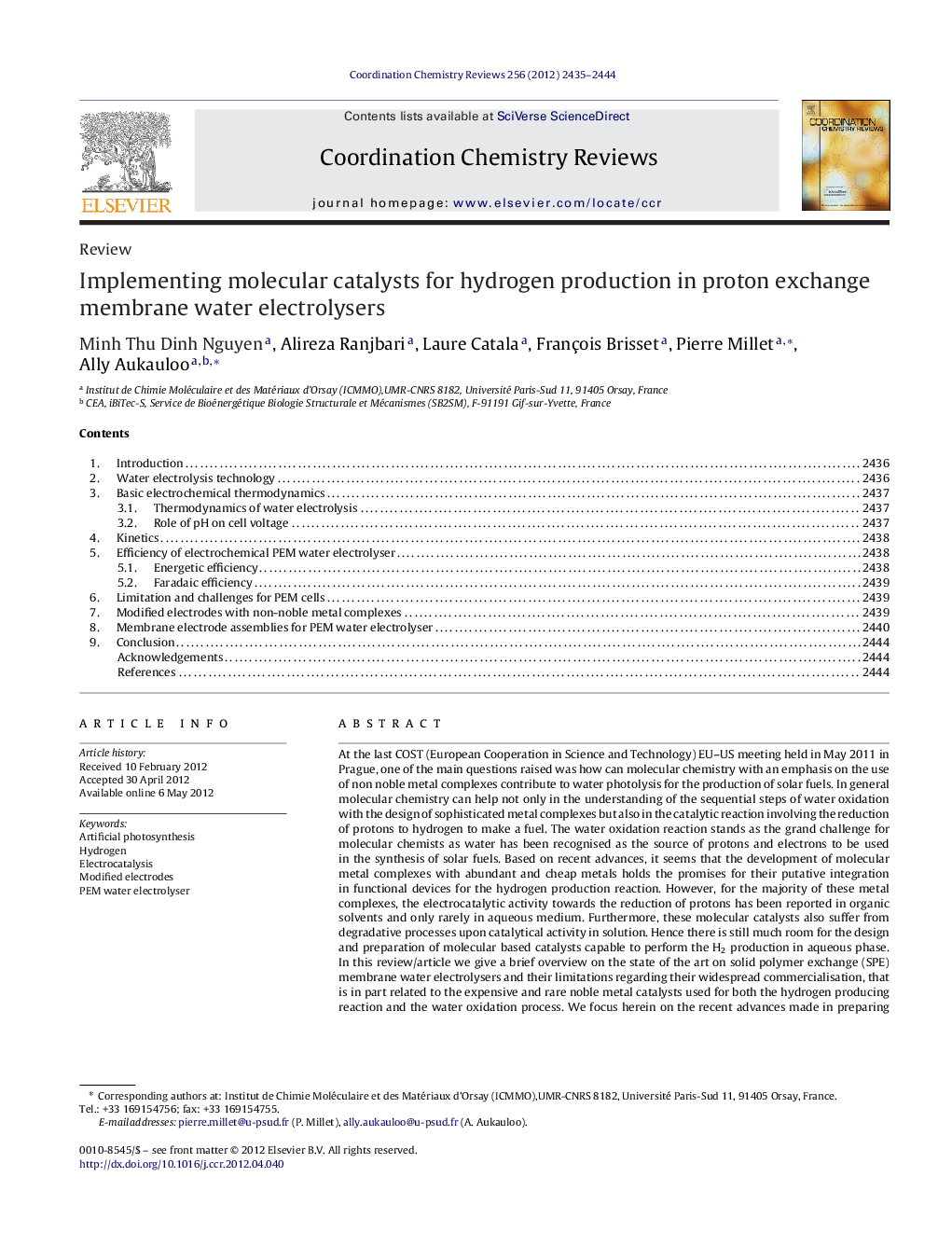| کد مقاله | کد نشریه | سال انتشار | مقاله انگلیسی | نسخه تمام متن |
|---|---|---|---|---|
| 1300136 | 1498766 | 2012 | 10 صفحه PDF | دانلود رایگان |

At the last COST (European Cooperation in Science and Technology) EU–US meeting held in May 2011 in Prague, one of the main questions raised was how can molecular chemistry with an emphasis on the use of non noble metal complexes contribute to water photolysis for the production of solar fuels. In general molecular chemistry can help not only in the understanding of the sequential steps of water oxidation with the design of sophisticated metal complexes but also in the catalytic reaction involving the reduction of protons to hydrogen to make a fuel. The water oxidation reaction stands as the grand challenge for molecular chemists as water has been recognised as the source of protons and electrons to be used in the synthesis of solar fuels. Based on recent advances, it seems that the development of molecular metal complexes with abundant and cheap metals holds the promises for their putative integration in functional devices for the hydrogen production reaction. However, for the majority of these metal complexes, the electrocatalytic activity towards the reduction of protons has been reported in organic solvents and only rarely in aqueous medium. Furthermore, these molecular catalysts also suffer from degradative processes upon catalytical activity in solution. Hence there is still much room for the design and preparation of molecular based catalysts capable to perform the H2 production in aqueous phase. In this review/article we give a brief overview on the state of the art on solid polymer exchange (SPE) membrane water electrolysers and their limitations regarding their widespread commercialisation, that is in part related to the expensive and rare noble metal catalysts used for both the hydrogen producing reaction and the water oxidation process. We focus herein on the recent advances made in preparing modified carbon electrodes with molecular based complexes and on their catalytic properties in heterogeneous medium. A challenging step in this research field is to couple the cathodic process to that of the water oxidation reaction. We report here on the implementation of fluroboryl dimethylglyoxime cobalt complexes supported on a carbonaceous material at the cathode of a proton exchange membrane (PEM) water electrolysers. electrocatalytic activity for the H2 production was observed with current densities in the range of 500 mA cm−2 for a cell efficiency of 80% using iridium at the anode. The durability of these systems was tested for several days upon on and off polarisation without noticeable loss in activity. These results therefore lead us to think that it should be feasible to reduce the cost of actual PEM water electrolyser by replacing platinum at the cathode.
► Proton exchange membrane water electrolysis has a number of advantages over the traditional water–alkaline.
► The main drawback comes from the fact that this is an expensive technology.
► The replacement of platinum-family catalysts and expensive solid polymer electrolyte remain challenging issues.
► Some recent advances have been made at the cathodes of PEM cells using non-precious metal electrocatalysts and are presented.
Journal: Coordination Chemistry Reviews - Volume 256, Issues 21–22, November 2012, Pages 2435–2444